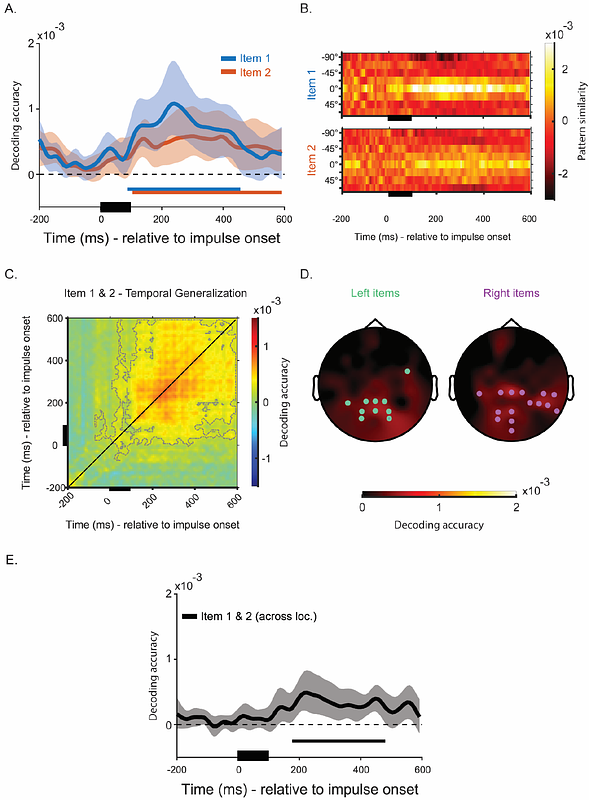When do peripherally encoded memories generalize in visual working memory?

When do peripherally encoded memories generalize in visual working memory?
Kandemir, G.; Olivers, C. N. L.
AbstractPrevious work has demonstrated that visual working memory of peripherally presented patterns transitions from location-specific to spatially generalized representations. It remains unclear what the temporal dynamics are of this generalization, and to which processing stages it is linked. Here we investigated the neural correlates of peripherally encoded memoranda before and after an item was selected for response, focusing on when the representation changes from a location-specific to a spatially generalized code. Thirty healthy participants memorized two orientations presented serially at 15 degrees eccentricity to the left and right of central fixation. One of the two items was subsequently cued, for which memory performance was then assessed. During the delays between each of these events, impulse signals were presented to trace memoranda in potentially activity-silent or activity-reduced states. Replicating prior findings, we observed that neural codes transitioned from dynamic, location-specific states to spatially and temporally generalized stable states post-encoding, here emerging from about 400 ms onwards. Importantly, this already occurred during maintenance, prior to selection of the response-relevant item. After the cue, first the location, and then the identity of the cued item emerged in the signal, suggesting that, despite the by then generalized code, location remained a useful basis for selection. The results suggest that spatial generalization is predominantly a maintenance-related rather than a selection-related process.